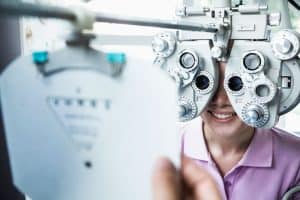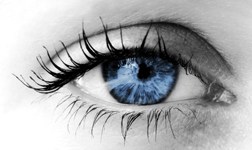 During an eye exam, you can expect a thorough evaluation of your eye health and vision. The specific tests and procedures conducted may vary depending on the purpose of the exam (e.g., a routine checkup, a contact lens fitting, or an evaluation for a specific eye condition), but here is a general overview of what you can typically expect during an eye exam:
During an eye exam, you can expect a thorough evaluation of your eye health and vision. The specific tests and procedures conducted may vary depending on the purpose of the exam (e.g., a routine checkup, a contact lens fitting, or an evaluation for a specific eye condition), but here is a general overview of what you can typically expect during an eye exam:
- Medical History: The eye doctor will start by asking about your medical history, including any existing eye conditions, general health, medications you are taking, and any eye-related symptoms or issues you may be experiencing.
- Visual Acuity Test: This is the classic “reading the chart” test where you’ll be asked to read letters or symbols from a chart to assess your distance and near vision. This helps determine if you need corrective lenses.
- Refraction: The optometrist or ophthalmologist will use a phoropter or other devices to fine-tune your prescription (if necessary) by asking you to compare lenses to determine the best correction for your vision.
- Eye Muscle and Alignment Test: This test checks how well your eye muscles work together and if there are any issues with eye alignment or coordination. It can help detect conditions like strabismus or amblyopia (lazy eye).
- Eye Pressure Measurement: This is usually done with a tonometry test to check for increased intraocular pressure, which is a sign of glaucoma.
- Slit-Lamp Examination: The doctor uses a slit lamp (biomicroscope) to examine the front of your eyes, including the cornea, iris, lens, and conjunctiva. This can detect conditions such as cataracts, corneal diseases, and signs of eye infection.
- Dilation: Your eyes may be dilated using eye drops to allow the doctor to get a better view of the back of your eyes, including the retina and optic nerve. Dilation can cause temporary blurriness and light sensitivity.
- Retinal Examination: The eye doctor will use various instruments to examine the inside of your eyes, looking for signs of conditions like macular degeneration, diabetic retinopathy, and other retinal diseases.
- Visual Field Test: This test assesses your peripheral vision and can help detect conditions like glaucoma.
- Color Vision Test: This evaluates your ability to distinguish between different colors, which can be important for detecting color vision deficiencies.
- Intraocular Lens Assessment: If you are considering cataract surgery or have had it done, the doctor may assess the power of the intraocular lens (IOL) to ensure the correct prescription.
- Consultation: After the examination, the eye doctor will discuss the findings with you, explain any issues, and recommend any necessary treatment, including prescription eyeglasses or contact lenses, medication, or referrals to specialists if needed.
The specific tests and order of the examination may vary depending on the eye care provider and the purpose of the exam. If you have any specific concerns or symptoms related to your eyes, make sure to communicate them to the eye doctor during the exam. Regular eye exams are essential for maintaining good eye health and catching potential issues early.
